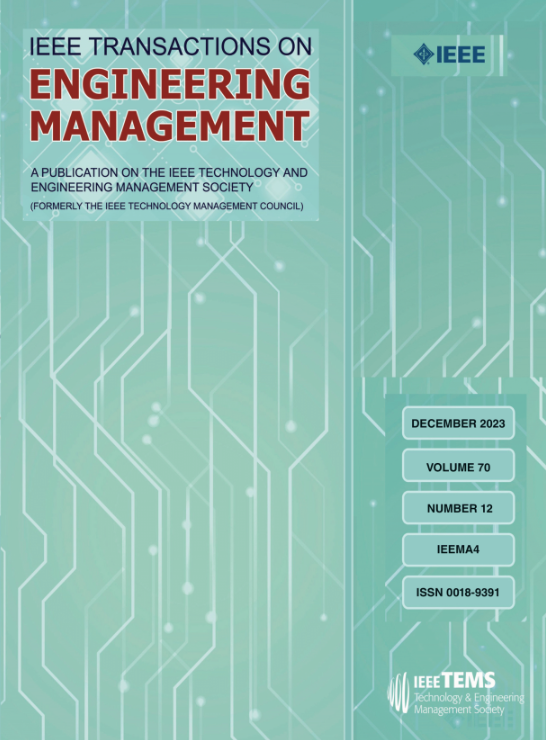Joint Optimization of Leased Products Maintenance Strategy and Spare Parts Remanufacturing Decision Making With Differential Quality
IF 5.2
3区 管理学
Q1 BUSINESS
引用次数: 0
Abstract
To reduce economic loss caused by uncoordinated maintenance of leased products and supply of spare parts, and environmental pollution caused by end-of-life products and spare parts, the joint optimization of leased products maintenance strategy and spare parts remanufacturing decision making with differential quality is studied. In view of the differential quality of replaced and disassembled spare parts, in this article, we first analyze the impact on their remanufacturing cost and remanufacturing rate. Then, according to the maintenance strategy and market demands for leased products, we discuss the stochastic demands for spare parts for preventive maintenance (PM) and corrective maintenance of leased products. Finally, we propose a joint optimization model for leased products maintenance strategy and spare parts remanufacturing decision making to maximize the lessor’s profit. The results show: First, as PM times of leased products and remanufacturing cost threshold of spare parts increase, the lessor’s profit increases first and then decreases, and production quantity of new products is higher front and lower back; second, the lessor should not blindly increase PM times of leased products and expand the quantity of remanufactured spare parts to avoid overmaintenance of leased products and overproduction of remanufactured ones; third, the lessor can appropriately increase PM degree of leased products to mitigate the accelerated degradation of remanufactured products and reduce maintenance cost; and fourth, the lessor should balance the saved cost of remanufactured spare parts with increased demands for spare parts and maintenance cost brought by the failures of remanufactured products and judge in which circumstances is profitable to produce remanufactured ones.差分质量下租赁产品维修策略与备件再制造决策的联合优化
为减少租赁产品维修与备件供应不协调造成的经济损失和报废产品与备件造成的环境污染,研究了不同质量下租赁产品维修策略与备件再制造决策的联合优化问题。鉴于更换和拆卸后的备件质量存在差异,本文首先分析了对其再制造成本和再制造率的影响。然后,根据租赁产品的维修策略和市场需求,讨论了租赁产品预防性维修和纠正性维修的随机备件需求。最后,提出了租赁产品维修策略和备件再制造决策的联合优化模型,以实现出租人利润最大化。结果表明:第一,随着租赁产品维修次数和备件再制造成本门槛的增加,出租人的利润先增加后降低,新产品的产量比前高后低;第二,出租人不应盲目增加租赁产品的维修保养次数和扩大再制造备件的数量,避免租赁产品维修过度和再制造产品生产过剩;三是适当提高租赁产品的PM程度,缓解再制造产品的加速退化,降低维修成本;第四,出租方应在节省的再制造备件成本与再制造产品失效带来的备件需求增加和维修成本之间进行权衡,判断在何种情况下生产再制造产品是有利可图的。
本文章由计算机程序翻译,如有差异,请以英文原文为准。
求助全文
约1分钟内获得全文
求助全文
来源期刊

IEEE Transactions on Engineering Management
管理科学-工程:工业
CiteScore
10.30
自引率
19.00%
发文量
604
审稿时长
5.3 months
期刊介绍:
Management of technical functions such as research, development, and engineering in industry, government, university, and other settings. Emphasis is on studies carried on within an organization to help in decision making or policy formation for RD&E.
 求助内容:
求助内容: 应助结果提醒方式:
应助结果提醒方式:


